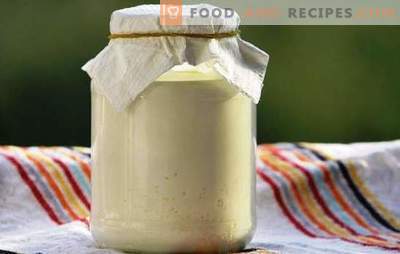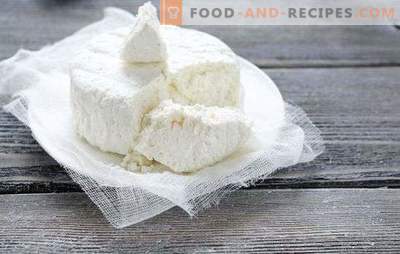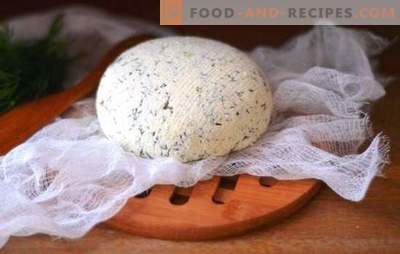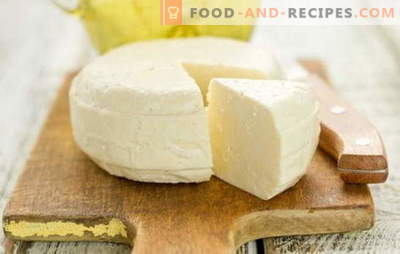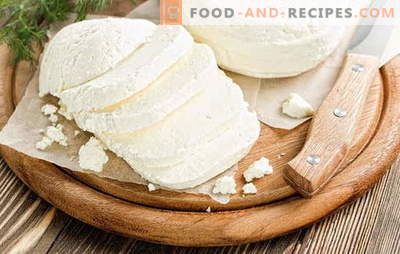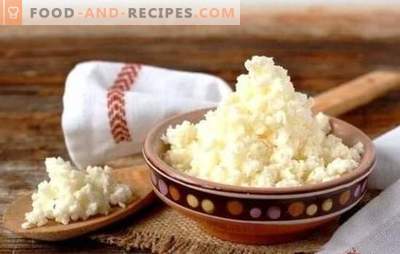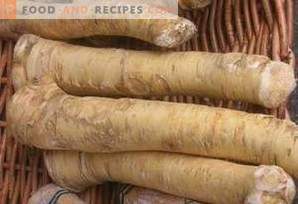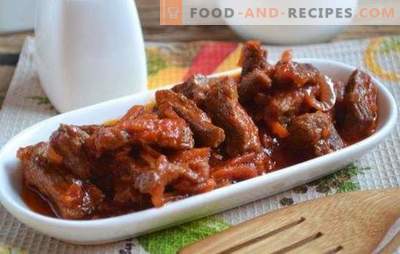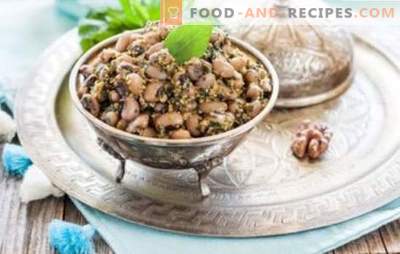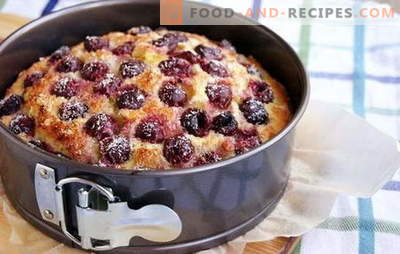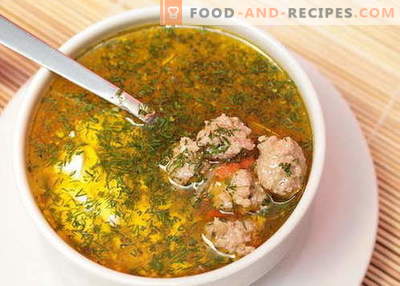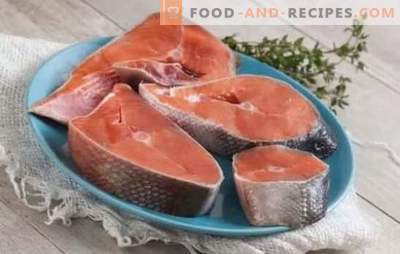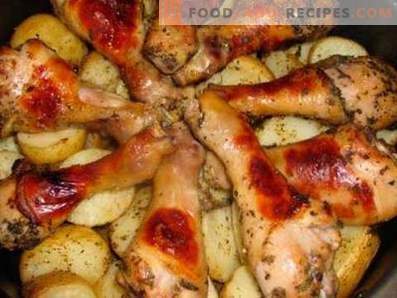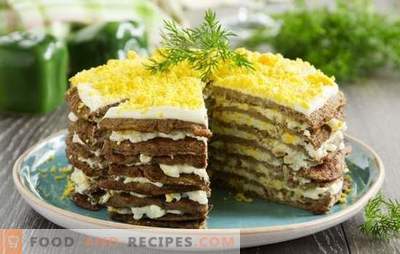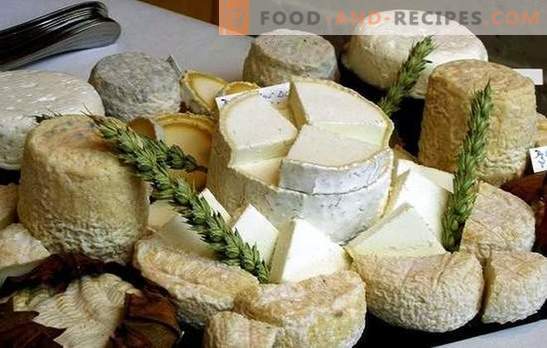
Once, seven hundred years ago, goat cheese was not a delicacy, and eating it for breakfast, lunch and dinner was considered the norm.
Nowadays, in the conditions of tough competition of cheese producers, the product has received a status that limits geographically the possibility of making its copies and using the original names.
In our country, there is a cattle-breeding tradition - to breed mainly cattle, and therefore the raw material base makes it possible to produce cheeses mainly from cow's milk, which, of course, limits the taste preferences of goat cheese lovers.
In addition to this, sanctions and counter sanctions appeared that restricted the export of goat cheeses from countries traditionally engaged in breeding goats and sheep and producing cheeses from goat milk.
This circumstance further narrowed the range of cheeses in the domestic market.
Usually it takes 12-13 liters of milk to make a kilogram of goat cheese. This factor explains the high cost of the product. The ripening period of cheese can reach several months - this affects the profitability of goat cheese production and explains why farmers prefer to breed cattle. But the value of goat milk is, nevertheless, more significant in that it is more close in composition to that of human milk, and based on it milk formulas are made for babies, while natural cow's milk contains less enzyme, lipase that dissolves fats. and promotes better absorption of the product.
Fortunately, we are still actively engaged in breeding goats in private farms, international standards are not a decree for us, and if there are own goats, there will be goat cheese. Therefore, making homemade goat cheese is our answer to all production bans and sanctions.
Only one small obstacle remains - the exact formulation of goat cheese. Since most of the recipes for the most famous goat cheeses are kept by their producers in the strictest secrecy, all that remains is to look for your own recipes, try them, experiment. Although, there is a certain positive point in this: this is how the famous cheeses Feta, Manchego, Ker de Chevre, Brinza, Crottin and many others were born. Who knows, it may happen that the search for the original recipe will lead to new discoveries.
How to make goat cheese at home - basic technological principles
Before considering the technological aspects of making goat cheese, it is necessary to consider in more detail its biochemical composition, which affects the quality and taste characteristics of goat cheese, and also plays a significant role in the cooking technology itself.
Proteins and fats of goat milk are smaller in comparison with the elements of cow's milk, and their content is also somewhat lower. Therefore, homemade goat cheese is produced by a dietary product in comparison with cow's milk cheeses. Small balls of fat in the process of ripening milk slip into the serum, resulting in the resulting milk clot contains less fat than in fermented cow or buffalo milk. Another feature of goat milk is a low level of acidity, which is why in the process of ripening casein turns into flakes, which are poorly connected to each other.
For use in fresh, unprocessed form, these properties of goat milk have a positive assessment: it does not cause heartburn or allergic reactions, but special preparation of the raw materials is required to make cheese from it.
Goat milk to improve coagulation and increase the mass fraction of dry matter mixed with cow's milk. Since the coagulability of cow's milk is on average 10% higher, therefore the addition of a small fraction of it will not greatly affect the taste of homemade goat cheese.
The next way, which allows to increase the coagulability of goat milk and get a more dense clot during souring is the introduction of an increased rate of fermented milk bacteria and regulation of the acid-salt composition of the raw material. At home, you can use sour cream, yogurt based on cow's milk (10-20% by weight of goat milk) as a starter. The disadvantage of this fermentation method is that you have to independently, each time, count the amount of ferment injected, and fermentation time plays a big role for goat milk: it cannot be overdone so as not to end up with an undesirable aftertaste. In order to obtain a dense stable clot, as well as maximum separation of dry matter from whey, it is good to use preheating with the preliminary addition of a solution of citric acid, calcium chloride, pepsin. I must say, if there is a strong desire to do home-made cheese making, then it is better to purchase special starters in specialized stores in advance, the benefit is that there are a lot of them now. You can order the necessary goods for the production of cheese for home delivery, and get at the appointed time not only sourdough with detailed instructions for its use and calculations, but also the forms for cheese, pistons, presses and even a cheese ripening chamber that are missing in the economy. The dishes are also important for home-made cheese making: if it is in the right quantity, it is convenient, then the process of making home-made cheese from goat milk will be easy and fun, so much so that you can think about your own small business. Believe me, even if you have to buy milk from farmers, due to the lack of your own farm, then taking into account the cost of goat cheese, the cost of purchasing raw materials and cooking will quickly pay off.
As for the taste characteristics of goat cheese, here it is necessary to pay attention to two points.
First, goat cheese, of exactly the same taste as in France, or as in Spain, will never work in Russia, even if the secret is revealed how to make home-made goat cheese using the original technology of its manufacturer. The fact is that the habitat of the Spanish and French goats differs from our area, respectively, there are differences in the food, which significantly affects the quality characteristics of goat cheese. This also includes the breed of goats, the conditions of their detention, age and other physiological features of animals. But it's not a problem. It is possible that the cheese from the milk of local goats will come out even better than the one that meets European standards.
However, the second important point is not to be ignored. Choosing goat's milk is still extremely careful. It sometimes has a very specific and unpleasant smell, due to improper animal welfare conditions and inadequate compliance with sanitary standards. This smell may not disappear even after pasteurization of milk and remain in the finished cheese, but one must take into account that there are also recipes for cheeses that imply the use of raw milk. In retail chains, as a rule, pasteurized goat milk is offered. Its advantage is that it does not have a specific smell, but it is this feature that makes it impossible to get some varieties of homemade cheese from goat milk, since they must be felt precisely this smell and taste. In addition, pasteurization also affects technological principles and requires the addition of additional components to milk in accordance with specific formulations.
The rest of the technology of making homemade goat cheese is no different from cheese making on the basis of cow's milk. Considering the above, it is necessary to treat the initial stages only more scrupulously - the selection of raw materials, the fermentation of goat milk, the addition of ferment and rennet enzymes, the production of curd grain. Further preparation of homemade cheese from goat milk depends entirely on the recipe itself. For sour-milk fresh cheeses, after performing all the above operations, the process of making cheese is practically completed, since after separation of the whey, the product goes through a short ripening stage. For hard cheeses after receiving the curd grain, further processing is required - melting. Only after this hard cheeses are sent for ripening.
On the classification of cheeses according to the method of their manufacture and assortment, it is only necessary to say that this is a very extensive topic and it is better to consider it separately, because there are only about two thousand known types of cheese now in the world. Naturally, the methods of their preparation, the composition of the recipes also differ from each other. Goat cheese lovers are probably familiar with the assortment for a long time, and inquisitive housewives who are used to experimenting can try their hand and experience the skills on the proposed recipes. For beginners in homemade cheesemaking it will be better to practice on the simplest recipes for goat cheese.
Recipe 1. How to make homemade goat cheese, pickled
Composition:
- Natural goat milk 5 l
- Salt
- Pepsin
Preparation:
Heat fresh milk to 30 ° C, enter rennet, after having dissolved it in a small amount of milk, in accordance with the instructions on the product packaging. Stir the milk to form a clot. Let the mass stand and harden for 20-30 minutes. Remove the formed clot, pre-cut it into cubes, using skimmers. It is necessary to spread the clot on a cotton sheet or gauze, folded four times to prevent the flow of solid particles of curd. Gauze for convenience, you can put in a colander or in the form of cheese, with holes in the bottom for draining whey. Cover the warm clot with a napkin to protect it from weathering and ingress of unwanted impurities. Install on pallet. When the cheese is sufficiently compacted, put a yoke on top of the napkin. Hold 10-12 hours. At this time, cheese is best kept in a cool room or refrigerator (away from the freezer). Prepare brine from the whey, add 10-16% of salt to it, to taste, and heat until completely dissolved. Free the cheese from the yoke, unfold, cut into large pieces, 150-170 g each, and put in a warm pickle. When cool, close the container lid and store in the refrigerator, but not more than five days.
Recipe 2. How to make homemade goat cheese - French Crottin, with white mold
For this recipe, it is better to pre-purchase ingredients at specialized points of sale in order to get the cheese that best matches the original taste.
Composition:
- Homemade goat milk 4 l
- Rennet, liquid 0.6 g
- Calcium chloride (solution) 2 ml
- Geotrichum Candidum Mold (Powder) 0.2 g
- Starter, mesophilic 1.5 g
Preparation:
Caution: Use only sterile utensils and wear gloves.
For making small heads, you can use cake pans. They need to be treated with alcohol and set on a drain mat, which, in turn, put on the grid with a tray. To ripen cheese, you also need a container with a lid and a grill installed inside, as well as napkins that need to be changed during the ripening period of the cheese (14 days).
Heat the milk to 25 ° C and add mold and leaven, stir gently until the powders dissolve. Then enter the abomasum and calcium chloride solution. Stir again and leave, covered with a lid until a tight clot forms, for 17-20 hours. Cover with a lid is not tight to penetrate the air. The clot should settle at the bottom of the dish and cover with a layer of serum. Collect the serum from the surface and begin to lay the clot in the prepared forms. Immediately the whole clot does not fit, so you need to wait until it condenses as a result of the dripping of serum residues, and continue to decompose the curd mass - note that it is designed for 10 forms, and making heads of smaller volume is not recommended.
Cover the cheese in the forms with a sterile napkin for two days. After 24 hours, turn the forms over, leaving them, still on the drainage mat. The cheese will continue to be pressed for another day under its own weight. After removing the form and sprinkle it with salt. After three days, transfer the cheese to a container for ripening. A further cooking process is to take care of the cheese for two weeks - during this time it will reach the required organoleptic characteristics. Store container at 8-10 ° C, do not close tightly, change napkins every day. When vapors appear on the lid of the container, wipe it with a sterile cloth to prevent condensation from draining onto the cheese. Requirements to the quality of the cheese: a white wrinkled crust should appear on the surface. The appearance of blue mold indicates a high humidity during ripening. The crust should also not crack, which indicates too low humidity.
Ready cheese store in a separate container, wrapped in parchment, at 5 ° C, up to 1.5 months.
Recipe 3. How to make homemade goat cheese - French Walesa with a coal crust
Composition:
- Milk, goat 4.5 liters
- Mold of two types - 1.25 mg each:
- Geotrichum Candidum,
- Penicillium Candidum;
- Rennet 5 mg
- Mesophilic yeast 7 mg
- CaCl solution 2 mg
- Salt, charcoal - 3 tsp.
Preparation:
The whole process of making this cheese coincides with the previous recipe, with the exception of some moments of the final stage - the ripening of cheese. In addition, the cheese head should have the shape of a truncated pyramid, weighing about 0.5 kg.
At the stage when the formed curd should be treated with salt, combine it with charcoal (preferably, it should be ash of burnt fruit trees). The term of ripening in a container is 10 days at a temperature of 8 ° C.
Cheese should be stored in parchment paper, rolled up in two layers, for two months.
Recipe 4. How to make homemade goat cheese - Halloumi
Composition:
- Milk (goat or cow) 6 l
- Pepsin (solution) 2 ml
- Salt, fresh mint (mixture) 50 g
Preparation:
Enter the rennet solution into the freshly heated milk and continue to warm the milk to 35-38 ° C for 20-30 minutes. After that, let stand for a bit to form a tight enough clot. Separate the whey and put the cheese into cooked, lined forms with gauze with holes for dripping whey. Forms set on the grid in the pan. Cover them with gauze too. Within two hours, flip the molds twice so that the cheese is better pressed. Remove the form, leaving the cheese on the grill.
Heat the drained whey in a saucepan and transfer the cheese to it along with the grate. Warm up for half an hour, not allowing the whey to boil (temperature - 90-95 ° C). The finished cheese floats to the surface. Carefully place it on a plate, lightly press it down when it becomes warm and roll the flat circles in half, in the shape of a crescent. Treat the surface with a mixture of salt and chopped fresh mint. Store in a closed container, 2 weeks, to avoid drying out. This cheese has a high melting point and is very suitable for grilling.
Recipe 5. How to make homemade goat cheese with cow's milk cream
Composition:
- Cream (50%) 1.0 L
- Goat milk 2 l
- Lemon juice 300 ml
- Sour cream (at least 25%) 250 g
Preparation:
Combine dairy products and steam up so as not to burn. Bringing to 30 ° C, gradually pour into the milk mass, in a thin stream, natural lemon juice, while continuously and smoothly stirring. As soon as the separation of whey from the walls of the pan begins, turn off the stove, stop stirring and allow the mass to stand until it is completely cooled. Separate the serum by pouring over the contents of the pan into gauze lined with a colander (place a pan under it beforehand). After 12 hours, transfer the cheese mass to a blender, add sour cream and smash.
Cream cheese can be used to make a dessert or snack. When adding sour cream, you can also use different flavors: spicy greens, bacon, fish, mushrooms.
Recipe 6. How to make homemade goat cheese with spices, brine type
Composition:
- Milk, whole 10.0 l
- Rennet 5 ml
- Calcium chloride 3 ml
- Salt
Spices:
- coriander,
- cumin,
- dried paprika and tomatoes,
- basil and olives,
- Dill and garlic
Work order:
For the preparation of cheese, you can use the farm whole milk of any animal, either individually or in a mixture of any proportions.
The process of obtaining curd grain does not differ from the previous recipes: the enzyme is introduced, calcium salts when heated. After separation of the serum, any of the spicy compositions is added to the curd mass, and the prepared mass is placed for a day under a press. After that, the cheese can be stored in brine from table salt and water, but if you want to give the cheese extra spice, put it on the grill and sprinkle with a mixture of salt and the greenery that is already inside the head.
How to make homemade goat cheese - tips and tricks
- For the preparation of mold cheeses, it is imperative to observe sterile conditions in order to avoid the entry of unwanted bacteria into the composition of the product.
- If it is necessary to collect a large amount of goat milk several times, then it should be stored only in pasteurized form, in a refrigerator. For pasteurization, which involves not boiling milk, but prolonged heating to 65-70 ° C for 10-15 minutes, it is convenient to use a special immersion thermometer.
- To prevent the cheese from burning on the stove during the melting process, use steam boiling. Place the container with the cheese mass on a stand immersed in a large saucepan with water.
- The minimum volume of the cheese head should be at least 0.5 kg, since with a lower weight it is difficult to achieve the desired result. For the manufacture of cheese of this weight will need about five liters of milk.
- Serum remaining after receiving the curd grain can be used to prepare brine. Whey has a valuable composition, so do not throw it away, but try to use it to make a dough. It can also be useful for ripening milk during the next preparation of cheese. Ricotta can be made from pure and fresh whey.



